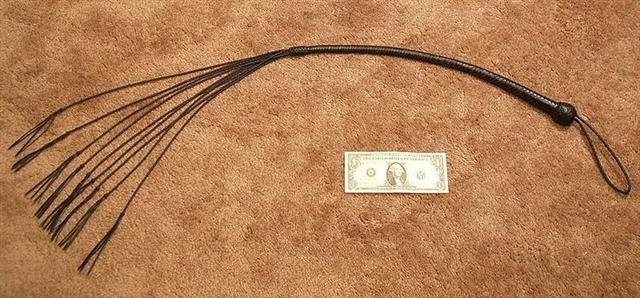Thus there should in principle be reason to mention Betelgeuze in several places in the rongorongo texts.
The 'moist one' is probably a reference to the position of Betelgeuze at the brink of the Milky Way River. On the other side was Gemini, and the left foot of Castor - holding his whip of 9 tails in his left hand - was still immersed.
The Fire of the Jaguar (presumably a reflection of Leo) had been stolen and taken across the River. The idea of stealing Fire seems to be central in ancient mythology. This Fire was not equivalent to the band of the hot equator but probably instead the perpendicular line of dawn which precession would move time and again. ... It should be stated right now that 'fire' is actually a great circle reaching from the North Pole of the celestial sphere to its South Pole ... Water yam roots were taken from Ma'eha; and also the Stag and the Smith had once upon a time stolen the Fire. ... All was now ready for departure except that there was no fire in the smithy. The ancestor slipped into the workshop of the great Nummo, who are Heaven's smiths, and stole a piece of the sun in the form of live embers and white-hot iron. He seized it by means of a 'robber's stick' the crook of which ended in a slit, open like a mouth. He dropped some of the embers, came back to pick them up, and fled towards the granary; but his agitation was such that he could no longer find the entrances. He made the round of it several times before he found the steps and climbed onto the flat roof, where he hid the stolen goods in one of the skins of the bellows, exclaiming: 'Gouyo!', which is to say. 'Stolen!'. The word is still part of the language, and means 'granary'. It is a reminder that without the fire of the smithy and the iron of hoes there would be no crops to store ... ... Then the old man was glad. He kindled a large fire, and as he wanted to keep it to himself, he built a house with a door which snapped up and down like jaws and killed everybody that wanted to get in. But the people knew that he was in possession of fire, and the stag determined to steal it for them. He took resinous wood, split it and stuck the splinters in his hair. Then he lashed two boats together, covered them with planks, danced and sang on them, and so he came to the old man's house. He sang: 'O, I go and will fetch the fire.' The old man's daughter heard him singing, and said to her father: 'O, let the stranger come into the house; he sings and dances so beautifully.' The stag landed and drew near the door, singing and dancing, and at the same time sprang to the door and made as if he wanted to enter the house. Then the door snapped to, without however touching him. But while it was again opening, he sprang quickly into the house. Here he seated himself at the fire, as if he wanted to dry himself, and continued singing. At the same time he let his head bend forward over the fire, so that he became quite sooty, and at last the splinters in his hair took fire. Then he sprang out, ran off and brought the fire to the people ... ... Let's go back before we are completely lost. Teke (the Occiput) stole 39 variants of water yam roots from his brother Ma'eha, leaving the positions of Adhil and Mira in peace. But 39 variants were Stolen! (Gouyo!) from Ma'eha = Brightness, bright, to lighten, to brighten up; ku ma'eha-á, it has already lightened up. Vanaga. 1. Light, brightness; to shine, to be bright, to glimmer, to glow; maeha mahina, moonshine; maeharaa, sunrise. Maehamaeha, bright. Hakamaeha, to brighten. Mq.: maeoeo, bright, transparent. 2. To get out of the way. 3. Thin, slender, slight. Churchill. The date January 29 for the culmination (at 21h) of Betelgeuze is suitable because anciently they counted only 29 nights in January and with February 1 a new season would begin, when light (life) as if by magic would wake up it all. I.e. north of the equator when the Sun reached this place (where the Wolf was), and south of the equator when in August the Full Moon did so. ... At the beginning of 44 B.C. - when Ceasar was still alive - the Senate decided to raise statues of him in all the temples and to sacrifice to him on his birthday in the month Quintilis, which in honour of him was renamed July. He was raised to the status of a god (among the other gods of the state) under the name Jupiter Julius. Marcus Antonius, who this year was consul together with Caesar, became high priest and responsible for the ceremonies. In the middle of February, at the time of the old feast of Lupercalia [Lupus = Wolf], he ran around naked and whipped the Roman ladies with thongs made from goat-skin [februa], in order to promote their fertility ... Furthermore according to our modern Gregorian calendar January 29 was right ascension day 365 + 29 - 80 = *314 (short for π). It was at the season of the Bat:
'Twinkle, twinkle, little bat!' // How I wonder what you're at!'
 Rhyming with the following Chinese station Rat (Kioe): ... In China, with Capricornus, Pisces, and a part of Sagittarius, it [Aquarius] constituted the early Serpent, or Turtle, Tien Yuen; and later was known as Hiuen Ying, the Dark Warrior and Hero, or Darkly Flourishing One, the Hiuen Wu, or Hiuen Heaou, of the Han dynasty, which Dupuis gave as Hiven Mao. It was a symbol of the emperor Tchoun Hin, in whose reign was a great deluge; but after the Jesuits came in it became Paou Ping, the Precious Vase. It contained three of the sieu, and headed the list of zodiac signs as the Rat, which in the far East was the ideograph for 'water', and still so remains in the almanacs of Central Asia, Cochin China, and Japan ... So the culmination of Betelgeuze in January 29 was associated with water in front, and likewise was the star Nunki who would become visible 4 days earlier in day *288 + *16 = *304 (January 25).  |
|||||||||||||||||||||||||||||||||||||||||||||||||||||||||||||||||||


